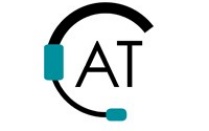Full citation
Thia, C.W., Kah-Hin, C., John, B., & Yan, X. (2005). An Exploratory Study of the Use of Quality Tools and Techniques in Product Development. TQM Magazine, 17(5), 406-424.
Format: Peer-reviewed article
Type: Research — Non-experimental
Experience level of reader: Fundamental
Annotation: Authors identify six internal factors and four external factors which affect the rate of adoption and use of tools useful to NPD.
Setting(s) to which the reported activities/findings are relevant: Federal lab, Large business, Small business (less than 500 employees), University
Knowledge user(s) to whom the piece of literature may be relevant: Manufacturers, Researchers
Knowledge user level addressed by the literature: Individual
This article uses the Commercial Devices and Services version of the NtK Model
Primary Findings
Methods:
- There is a gap between awareness and use of tools supporting NPD development activity. Four external factors are identified: 1) Project — type of project ranges from incremental to radical changes; 2) Organization — support from top management, team cohesiveness, and technical competence. 3) Industry — different industries adopt different NPD processes which might indirectly affect choice of tools. 4) Culture — cultural differences such as Eastern versus Western.
Case studies in industry.
Occurrence of finding within the model: Stage 4, Stage 5, Stage 6
- There is a gap between awareness and use of tools supporting NPD development activity. Six internal factors are identified: 1) User friendliness — ease of use and ease of learning; 2) Usefulness — provides certain value to user. 3) Time — training, implementation and maintenance time; 4) Monetary cost — cost to train and use, cost to employ consultants, cost for software and cost for implementation support; 5) Flexibility — extent to which a tool can be used effectively even if some guidelines are not followed; 6) Popularity — extent to which the tool is widely or commonly used and accepted by similar industries.
Case studies in industry.
Occurrence of finding within the model: Stage 4, Stage 5, Stage 6
